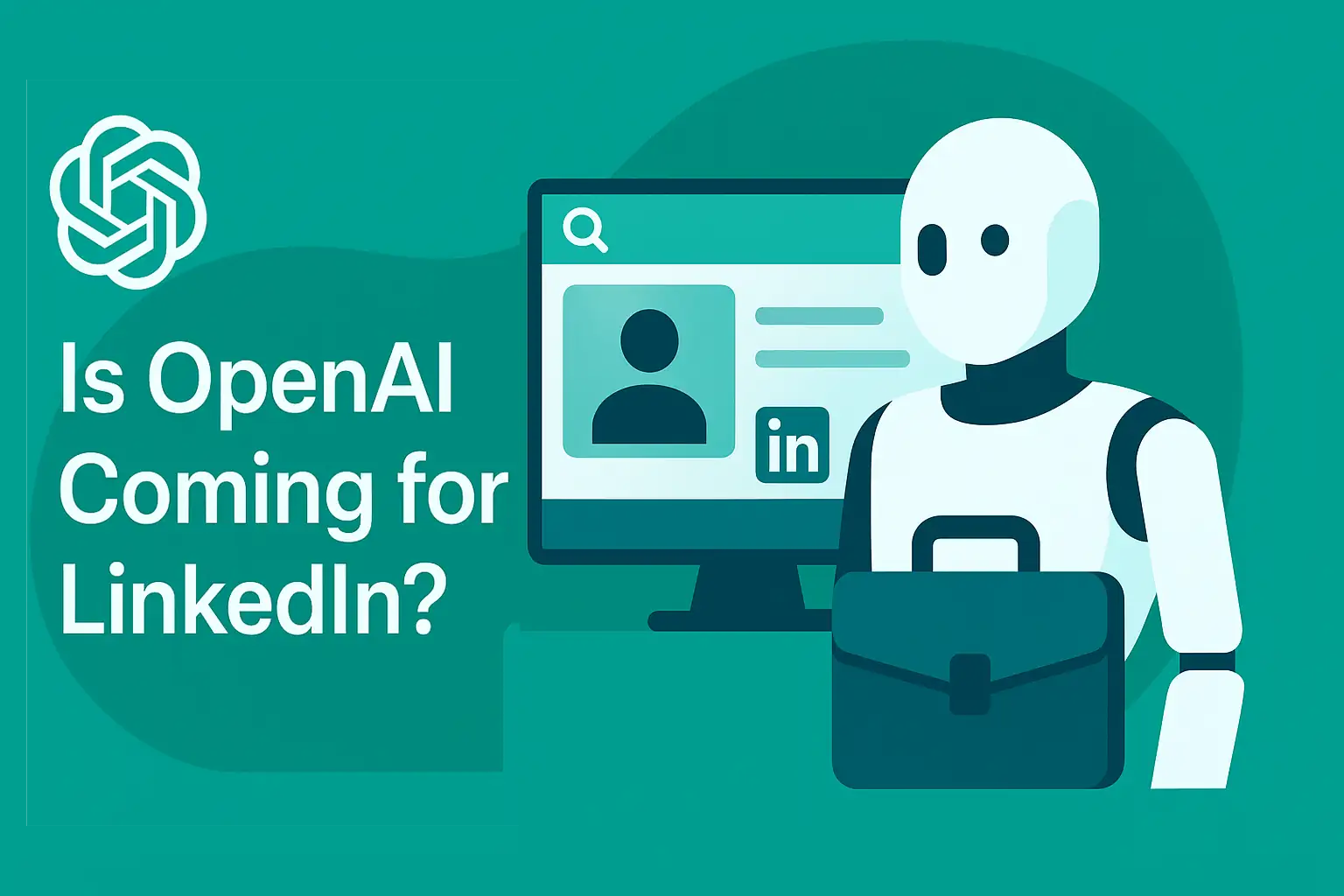
Will OpenAI Replace LinkedIn? Meet the GPT Career Assistant Coming in 2026
- What's new: OpenAI’s Jobs Platform
- How it works — the basics
- How to try it — timeline & expectations
- Best use cases
- Quick tips for future job seekers
- Ethics, privacy & disruption
What's new: OpenAI’s Jobs Platform
In a bold strategic move, OpenAI has announced an AI-powered job platform launching mid-2026. The project signals a major shift — from building tools that support the workplace, to building infrastructure that might replace or reshape the way we navigate careers altogether.
Why it matters: Instead of staying in the background of business workflows, OpenAI is stepping directly into the labor market. The company’s new job platform could challenge traditional players like LinkedIn, Indeed, and recruitment firms by offering a highly personalized, AI-driven career assistant powered by GPT models and user data.
The message is clear: AI won’t just replace tasks. It will help shape your career trajectory.
How it works — the basics
While the full technical breakdown is still under wraps, early insights suggest the OpenAI Jobs Platform will combine three powerful ingredients:
- GPT models — to understand and generate resumes, job descriptions, personal branding strategies, and communication with recruiters
- User data & preferences — to align job recommendations with your actual goals, skills, and values
- Labor market insights — to give you dynamic career suggestions based on trends, demand, and salary benchmarks
Think of it as having a career coach, recruiter, and branding consultant — all in one conversational interface. You might upload your resume, describe your goals, and have GPT recommend roles, rewrite your CV, prep you for interviews, or even negotiate offers on your behalf.
Bonus? It’s all frictionless and deeply customized.
How to try it — timeline & expectations
OpenAI has officially stated the platform will go live by mid-2026. Here’s what we expect based on their usual product rollout strategy:
- Closed testing in Q4 2025 — likely rolled out to selected ChatGPT Plus or Enterprise users
- Beta access in early 2026 — possibly as an integrated experience inside ChatGPT itself
- Full public launch mid-2026 — with additional integrations into third-party systems like ATS tools, job boards, or even LinkedIn
If you’re already using ChatGPT for career tasks (resume writing, job prep, cover letters), the upgrade to a dedicated job assistant could be seamless.
Best use cases
Here’s how people will likely use the OpenAI Jobs Platform once it’s available:
- Personalized job search
Receive daily job matches that fit your unique blend of experience, interests, location, and long-term goals — without keyword spam. - AI-powered resume building
Let GPT analyze the job posting and customize your resume or cover letter with optimized wording, tone, and formatting. - Career discovery
Explore career paths you may not have considered based on current skills, trends, and potential salary growth. - Interview coaching
Simulate interview questions based on actual job descriptions and receive real-time feedback on your answers. - Application automation
Streamline the entire process from discovery to application — potentially auto-filling fields, messaging recruiters, and scheduling interviews.
Quick tips for future job seekers
Want to prepare for the AI-driven future of hiring? Here’s how:
- Keep your data clean. Structured resumes, LinkedIn profiles, and skill tags help AI understand you better.
- Be goal-oriented. The more clearly you define what you want, the better the AI can guide you — think beyond “a job” and toward your ideal career arc.
- Save your work with ChatGPT. If you're already crafting bios, CVs, or intros in ChatGPT, start organizing them for reuse later on the platform.
- Try prompt-based planning. Get used to describing your goals, blockers, or experiences in short text — this helps the AI assist more accurately.
- Watch the market. Follow updates from OpenAI, LinkedIn, Google, or TikTok — any one of them could launch competitive tools next.
Ethics, privacy & disruption
With great power comes great disruption. OpenAI’s move into the job market raises important questions:
- Will traditional recruiters be displaced? Or will they use this tool to enhance their workflows?
- Who owns your career data? If GPT is guiding your decisions, how is your input stored, used, and shared?
- How will AI shape economic mobility? Could this democratize access to better jobs — or increase bias if not handled properly?
OpenAI is likely to provide opt-in settings and privacy controls, as with ChatGPT. But companies, policymakers, and job seekers alike will need to stay vigilant.
What’s certain: This move signals a shift from AI as “job disruptor” to AI as “career designer.”
Final thoughts?
OpenAI isn’t just helping people work smarter — it’s entering the job market with an assistant that might define the future of work itself. By blending GPT, personal data, and real-world insights, we could be witnessing the rise of a new AI-powered career ecosystem — where human ambition meets machine intelligence.